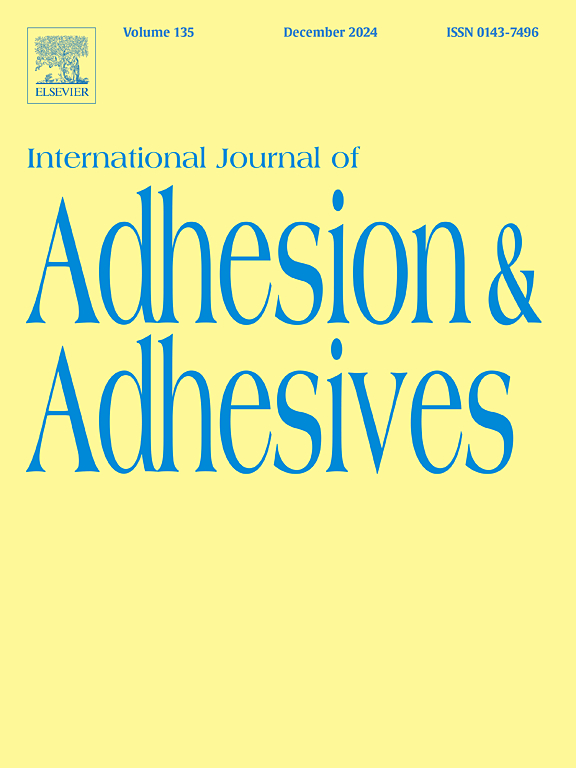Reversal of NaCl effect on P. aeruginosa and E. coli bacterial adherents
IF 3.2
3区 材料科学
Q2 ENGINEERING, CHEMICAL
International Journal of Adhesion and Adhesives
Pub Date : 2025-01-13
DOI:10.1016/j.ijadhadh.2025.103947
引用次数: 0
Abstract
Sodium chloride (NaCl) has previously been proposed as a disinfectant for water networks, where it was able to detach a bacterial adherent of Pseudomonas aeruginosa within 1 h of treatment. The purpose here was to verify the effectiveness of NaCl against P. aeruginosa and E. coli bacterial adherents over time. To this end, the NaCl effects on the bacterial adherents' stability and the surface properties of glass and strains were estimated respectively by the optical microscopy and the contact angle method. The optical microscopy’ results showed a clear detachment of both bacterial adherents after 1 h of treatment. Though, a progressive re-adhesion and formation of micro-colonies took place during the following hours of treatment. The contact angle data showed that the changes in the hydrophobicity (ΔGiwi) of P. aeruginosa and E. coli were random throughout the treatment, while their electrons donor characters (γ−) were unchanged. Meanwhile, the hydrophobicity of the glass has been reversed during the first hour (40.7 to −31.7 mJ/m2) and its electrons donor character have weakened (51.9–7.4 mJ/m2). However, glass gradually regains its natural surface properties (ΔGiwi: −10.3, 0.80, 18.0 mJ/m2, γ−: 14, 27.4, 48.3 mJ/m2). In short, the findings suggested that the reinstallation of bacterial adherents could be an energetic phenomenon related to the energetic properties of the surfaces.
求助全文
约1分钟内获得全文
求助全文
来源期刊

International Journal of Adhesion and Adhesives
工程技术-材料科学:综合
CiteScore
6.90
自引率
8.80%
发文量
200
审稿时长
8.3 months
期刊介绍:
The International Journal of Adhesion and Adhesives draws together the many aspects of the science and technology of adhesive materials, from fundamental research and development work to industrial applications. Subject areas covered include: interfacial interactions, surface chemistry, methods of testing, accumulation of test data on physical and mechanical properties, environmental effects, new adhesive materials, sealants, design of bonded joints, and manufacturing technology.
 求助内容:
求助内容: 应助结果提醒方式:
应助结果提醒方式:


